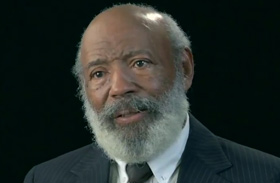Introduction

With his admission to the University of Mississippi in 1962, James Meredith became one of the heroic figures in the American Civil Rights Movement, succeeding against every legal, political and bureaucratic obstacle that blocked his path to becoming the university’s first African-American student. His persistence opened the door for thousands of African-Americans who followed and set an example for every student, of every background, about what even one individual can accomplish. The 1954 U.S. Supreme Court ruling on Brown v. Board of Education, which declared that separate schools are “inherently unequal,” made integration of schools possible. Some schools and universities accepted integration easily, while others put up great resistance. Examples of resistance follow:
- In 1956, the Virginia Legislature called for massive resistance to school desegregation and pledged to close schools under desegregation orders. That same year, under court order, the University of Alabama admitted Autherine Lucy, its first African-American student. White students and residents rioted, and Lucy was suspended and later expelled for criticizing the university.
- In 1957, President Dwight D. Eisenhower responded to defiance in Little Rock by sending a thousand paratroopers from the 101st Airborne Division to ensure the enrollment of nine black pupils at the city’s Central High School after Arkansas Gov. Orval Faubus used the National Guard to turn back the children.
- As told by Curtis Wilkie in his book Dixie: A Personal Odyssey Through Events That Shaped the Modern South, in 1959, “Clyde Kennard appeared at the registrar’s office at Mississippi Southern College in Hattiesburg. Before he could leave the campus, police stopped Kennard for reckless driving; the charges grew more serious after bottles of whiskey were allegedly found in his car. Later, Kennard was accused of stealing several sacks of chicken feed. The case had all the appearances of a setup; nevertheless, Kennard drew a prison sentence of seven years – even though he was suffering from colon cancer.”
- In 1961, a federal district court ordered the University of Georgia to admit African-American students Hamilton Holmes and Charlayne Hunter. After a riot on campus, the two were suspended. A court later reinstated them.
- In 1962, a federal appeals court ordered the University of Mississippi to admit James Meredith, an African-American student. Upon his arrival, a mob of more than 2,000 white people rioted; two people were killed.
- In 1963, two African-American students, Vivian Malone and James A. Hood, successfully registered at the University of Alabama despite Gov. George Wallace’s “stand in the schoolhouse door” – but only after President Kennedy federalized the Alabama National Guard. University of Alabama became the last Southern state university to desegregate.
Today, these historical events serve as markers of how far we’ve come as a nation, a state and a university, and they encourage us to work even harder to serve as a positive example of the benefits of diversity and inclusion. In October 2012, UM commemorated the 50th anniversary of its integration, an event that profoundly impacted this university’s vision and character. We see the next 50 years as a time to achieve more – to establish the highest levels of academic excellence, to prepare great leaders for every profession, to increase service projects across Mississippi and around the world, and to open the doors of higher education to all students willing to do the work required by a leading university, whatever their race, nationality, background or economic circumstance. We invite you to explore this website to learn more about James Meredith and the university as it was in 1962 and as it is today — a place that demonstrates an unwavering commitment to change and progress.
The Meredith Legacy
 Watch a video about the legacy of James Meredith. Produced by Media and Documentary Projects. Watch more in the Video Gallery.
Watch a video about the legacy of James Meredith. Produced by Media and Documentary Projects. Watch more in the Video Gallery.








